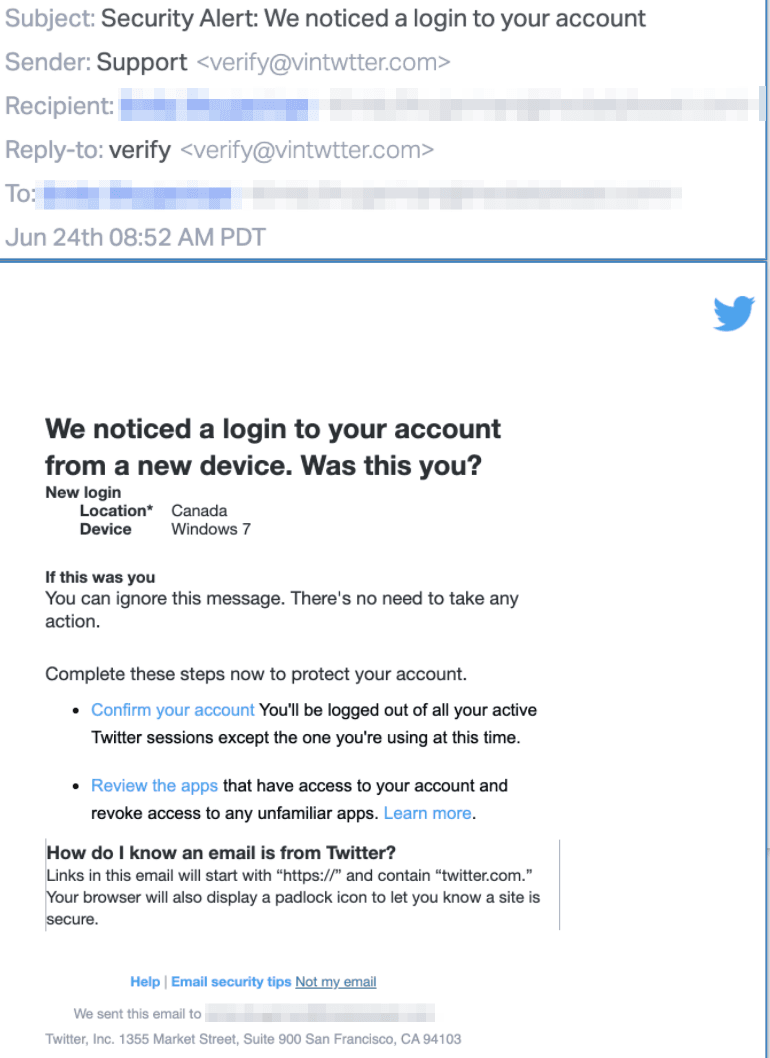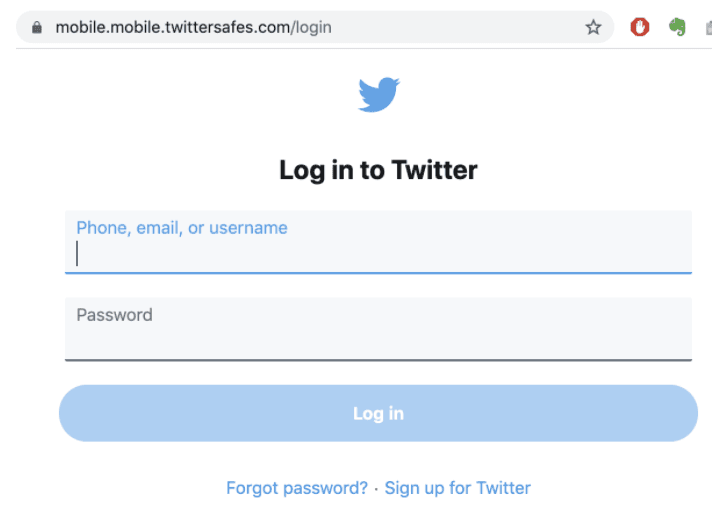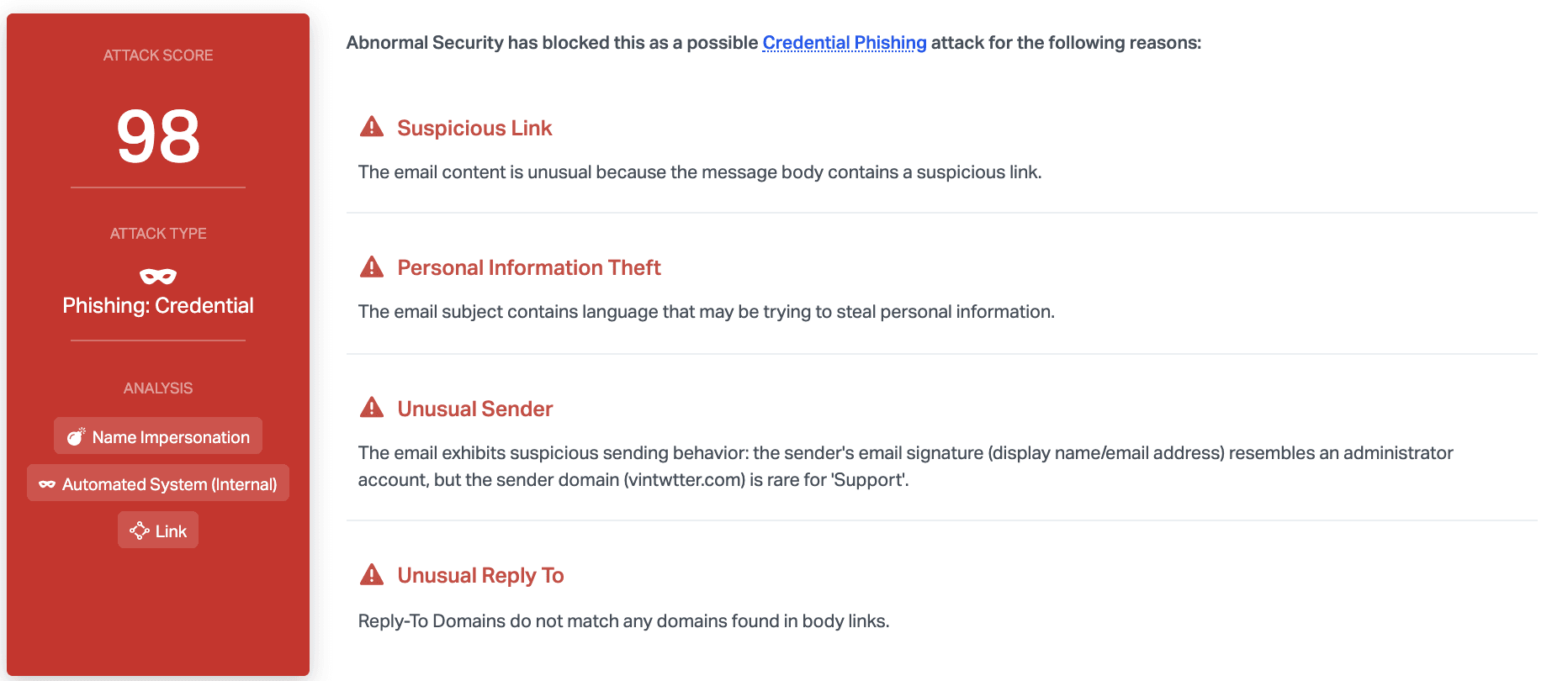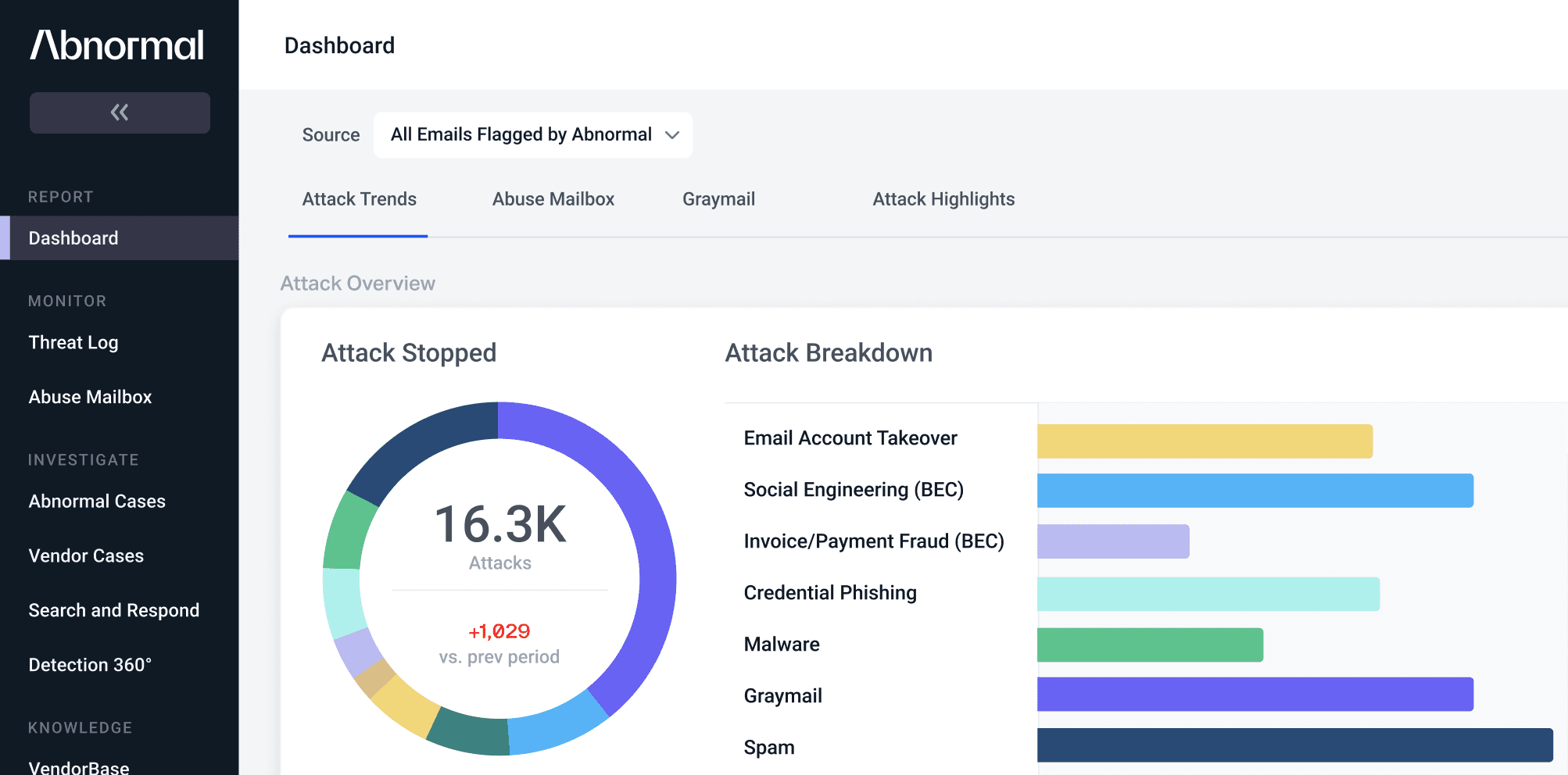Twitter Impersonated to Steal Credentials
Social media access can provide a lens into other parts of a person's life, making Facebook and Twitter unique when it comes to credential phishing campaigns. In this attack, cybercriminals targeted a specific individual who works at an organization that heavily leverages Twitter. This attack was intended to steal this individual's Twitter credentials, and provide access to their entire Twitter environment.
Summary of Attack Target
- Platform: Office 365
- Email Security Bypassed: Proofpoint
- Payload: Malicious Link
- Technique: Impersonation
Overview of Twitter Impersonation Attack
In this attack, the attacker impersonates a security notification email from Twitter. The sender email contains the Twitter brand name in the domain and the message states that there may have been a malicious login on the user’s account. In order to protect their account, the recipient must log in from the link provided.

The link is wrapped with text and redirects twice. The first redirect is hosted on a dynamic DNS service, and the second redirect is hosted by a recently registered anonymous domain that impersonates the Twitter landing page. The landing page is identical to the legitimate Twitter login page, and the domain contains the Twitter brand name as well.

Once on the landing page, if the user inputs their login credentials, the attacker can utilize this information to compromise the account.
Why the Twitter Credential Phishing Attack is Successful
By masquerading as a security notification, the attacker is able to inject a sense of urgency into this correspondence. The user’s main focus is to ensure the protection of their account, rather than dwelling on whether or not the email itself is authentic. Because the link is concealed with text, the user may hastily click the link to protect their account, without realizing that the link directs to a fake Twitter login page.
In addition, the email appears to be a legitimate automated notification, with the fake landing page appearing similar to Twitter's actual login page. By impersonating a security notification email, the attacker gains a sense of credibility to the user because, by notifying the recipient of a case of a “bad” login, the recipient believes the email to be “good”. The section of the email “How do I know an email is from Twitter?” is crafted by the attacker in an attempt to legitimize this attack to further fool the target.

This attack is highly sophisticated and unique, as it targets a specific individual in this organization. This type of attack has not been seen anywhere else, and the domain of the payload link was not flagged as malicious by many search engines. Compared to many social media phishing campaigns, this particular attack stands out as it is very selective in who is the recipient of such a unique attack.
Nevertheless, Abnormal was able to detect and stop it due to a variety of factors, including the suspicious link, unusual sender, and unusual reply-to address. Combined with the language that attempts to steal personal information, it quickly becomes clear that this email is malicious.
Interested in preventing these types of attacks for your employees? See a demo of the Abnormal Security platform today.
See the Abnormal Solution to the Email Security Problem
Protect your organization from the full spectrum of email attacks with Abnormal.

